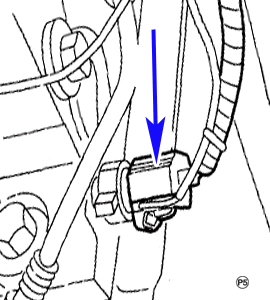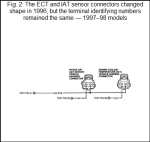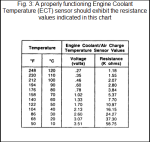ECT - Engine Coolant Temperature Sensor
Engine Coolant Temperature (ECT)
OPERATIONThe engine coolant temperature sensor resistance changes in response to engine coolant temperature. The sensor resistance decreases as the surrounding temperature increases. This provides a reference signal to the PCM, which indicates engine coolant temperature.
The following symptoms can be caused by a faulty Engine Coolant Temperature Sensor or circuit loose connections.
Engine Coolant Temperature Sensor Symptoms
- Extended crank time when the engine is cold
- Poor fuel economy
- Spark knock
- Lack of engine power
- Erratic and/or high idle
- Engine cooling fan stays running all the time
- Engine cooling fan fails to turn on
- Engine overheating
Engine Coolant Temperature Sensor Testing
- Disengage the engine wiring harness connector from the ECT sensor.
- Connect an ohmmeter between the ECT sensor terminals, and set the ohmmeter scale on 200,000 ohms.
- With the engine cold and the ignition switch in the OFF position, measure and note the ECT sensor resistance. Attach the engine wiring harness connector to the sensor.
- Start the engine and allow it to warm up to normal operating temperature.
- Once the engine has reached normal operating temperature, turn it OFF.
- Once again, detach the engine wiring harness connector from the ECT sensor.
- Measure and note the ECT sensor resistance, then compare the cold and hot ECT sensor resistance measurements with the accompanying chart.
- Replace the ECT sensor if the readings do not approximate those in the chart; otherwise, reattach the engine wiring harness connector to the sensor.

Car Engine Sensors :
- Powertrain Control Module (PCM)
- Throttle Position (TP) sensor
- Mass Air Flow (MAF) sensor
- Intake Air Temperature (IAT) sensor
- Idle Air Control (IAC) valve
- Engine Coolant Temperature (ECT)
- Heated Oxygen Sensor (HO2S)
- Camshaft Position (CMP) sensor
- Knock Sensor (KS)
- Vehicle Speed Sensor (VSS)
- Crankshaft Position (CKP) sensor
- Engine Trouble Codes





